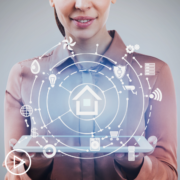How Will Advanced Technologies Enhance Myeloproliferative Neoplasm Care? from Patient Empowerment Network on Vimeo.
How will myeloproliferative neoplasm (MPN) care be enhanced by advanced technologies? Experts Dr. Krisstina Gowin from University of Arizona Cancer Center and Dr. Ana Maria Lopez from Sidney Kimmel Cancer Center share information about how technology can help manage symptom burden, risk factors, and the patient experience for enhanced MPN care.
Download Resource Guide
See More from MPN TelemEDucation
Related Resources:
Transcript:
Lisa Hatfield:
So, Dr. Gowin, do you have anything to add on, how MPN care or just cancer care, in general, could change with different technologies? We didn’t touch a lot on things like artificial intelligence and that type of thing, and we can speak to that or any other type of technology that you’re familiar with.
Dr. Krisstina Gowin:
Well, I think the artificial intelligence aspect is really going to change the paradigm again on how we’re designing, studies. And I think one of the biggest challenges that we have in myeloma and as well as myeloproliferative neoplasms, is to think about how do we optimally sequence our therapies to achieve best survival, right? And I think this is a wonderful problem to have. We have now not only one JAK inhibitor on the market, but several and more in the pipeline and several other therapeutic targets. And so now the question is which therapy and when do we employ it? So things like artificial intelligence will help us to answer that question with machine learning decision tree analysis, all of that is going to be answered through those kind of platforms. And so I think that is going to be a shift we will see in the next five years is many different machine-based learning algorithms to better understand those problems we cannot have tackled traditionally otherwise.
Sensors though is another one, right? And so a big thing in MPNs is not only addressing the blood counts and reducing risk of thrombosis, and to address symptom burden, but it’s really addressing lifestyle because it’s things like cardiovascular disease, stroke that really we’re worried about as some of the sequelae of having the disease and what we’re trying to prevent with therapeutics. And so even going back to the NCCN guidelines, it’s addressing cardiovascular risk factors as part of our core treatment goals. And so how do we really do that? And it’s really through lifestyle medicine and that’s where the sensors come in. And so now we have, these Fitbits and smartphones that connect to our Apple watches and we have Garmins and all these wonderful devices that are prompting us to move more, prompting us to be cognizant of our heart rate and stress response prompting us to meditate. And so I can envision those evolving over time and connecting to the EMR and being very seamlessly interwoven into our clinical trials. And we’re already doing that. In fact, we’re talking about doing one very soon in MPN patients. And so I think the sensors are gonna be another big way that we’re going to be integrating, into our clinical trials and symptom management tools.
Lisa Hatfield:
That’s fascinating. Thank you for that. And Dr. Lopez, do you have anything to add about other technologies and how they may affect cancer care in the future?
Dr. Ana Maria Lopez:
Sure. When Dr. Gowin mentioned the sensors, it just reminded me, we’re building this new building, patient care building and oncology will be there. And I did a tour recently, and we’re used to go to the doctor, you stop in, they get your blood pressure, they get your weight, et cetera. Here, you’ll walk in directly to your exam room and you check in at a kiosk, so you just kinda check in [chuckle] with a little robot kiosk, and then it’ll tell you where you’re going. You’ll go to Room 3, let’s say, and Room 3 will say, “Welcome, Lisa.” [chuckle] And so you know that you’re in the right place. And you’ll walk in, there’s your gown, you’ll sit in the exam chair, and the exam chair automatically is gonna take your vital signs. So it just seems, really these built-in aspects to the technology. And one of the things, again, what I just love about this work is that it’s a very interdisciplinary, multidisciplinary. And one of the projects that we were working on, which it ties into this, when I was in Arizona with the telemedicine program is we worked with the College of Architecture and with this concept of smart buildings.
Dr. Ana Maria Lopez:
So it’s kind of like that. Why should you do these different sensors that detect, but that it could also detect. You might walk into the room and you might be really nervous as you might be really cold, and it would detect that and it would warm the room for you. Or you might be coming in and be having hot flashes and it would just cool the room for you. So the technology has so much potential to really improve the patient experience.
Lisa Hatfield:
And that’s amazing to me. I think that would be incredible to walk into a building to have that experience, as long as it doesn’t take away the compassion and care I get from my providers. I am so fortunate to have extraordinary providers, so I don’t think it will ever take over that aspect of it, I think that is a fear people have, especially with artificial intelligence and that type of thing, I think it can only go so far. Can’t provide the humanness that’s required for patient care, so yeah.
Dr. Ana Maria Lopez:
Yeah. These are tools.
Share Your Feedback:
Create your own user feedback survey









